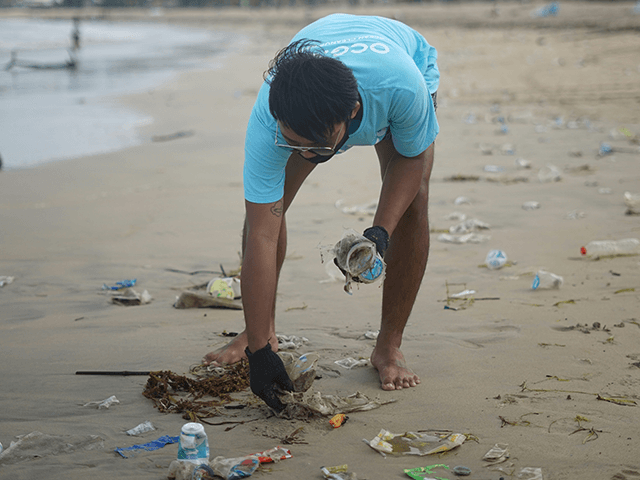
“When people become self-centered and self-enclosed, their greed increases. The emptier a person’s heart is, the more he or she needs things to buy, own, and consume.” —Laudato Sí 204
Consumerism is so prevalent in our lives that sometimes we do not realize how this is shaping our actions and world. By focusing on three areas of enormous consumption we may become more mindful and re-evaluate our daily purchases namely, the use of single use plastics, fashion/clothing, and home décor.
Single use plastic bombards our everyday purchases, groceries, food packaging, and water bottles to name a few. Water bottles are rarely recycled and some scientists question if recycling can even happen, or even work. Plastic is not biodegradable, and it does not decompose. Since World War II, 8.3 billion metric tons of plastic has been produced. Currently we have 150 million metric tons of plastic in our oceans; it is predicted that by 2050, we will have more plastic than fish in the oceans.
Dr. Jenna Jembreck in the Smithsonian article “The Ocean Portal Team” states over one billion plastic bottles are used daily and of these sixty million are from the United States. The average American uses 167 bottles a year and only recycles 38 of them. Economically, if we drink bottled water versus tap water the difference in cost is $1,400 for bottled vs $0.49 per year for tap! The discarded plastics are swirling into huge masses collecting in five gyres (garbage patches) in the oceans. Microplastics (tiny pieces of plastic) are now in food, beverages, and our bodies. Researchers are looking at the health impacts of these microplastics, particularly breast cancer.
Fast fashion contributes to climate crisis with tons of discarded clothing sitting in landfills. Synthetic fabrics production requires an estimated 342 million barrels of oil every year and forty-three million tons of chemicals per year. Being aware of these clothing facts can guide us to make better purchase decisions, including making smarter fabric choices and avoiding over purchasing.
How we make decisions about home décor, furniture, and appliances also affects our climate. Experts suggest taking time to research materials, longevity, and recyclability before we buy.
Pope Francis states in Laudato Sí that “Purchasing is always a moral—and not simply economic—act. Today, in a word, ‘the issue of environmental degradation challenges us to examine our lifestyles.’” LS206
Action Steps
- Use metal or glass reusable water bottles and eliminate the use of plastic bottles.
- Advocate for public water filling stations in airports, gas stations and public buildings.
- Evaluate purchases of synthetic fabrics and opt for natural fabrics of cotton, wool, and linen.
- Take time in deciding home décor, furniture, and appliances,
Sources:
“Chemical Recycling: A Dangerous Deception” by Beyond Plastics and International Pollutants Elimination Network (IPEN) October 2023
“Ocean Plastic: What You Need to Know” by Audrey Nakagame, 8 June 2021
“Ocean Find Your Blue Introduction: The Ocean Portal Team” reviewed by Dr. Jenna Jambreck, University of Georgia
"Important Plastic Water Bottle Stats” by Maggie Pace
“How does Polypropylene Fabric Impact the Environment?”
“Fast Fashion: How clothes are linked to climate changes” by Esme Stallard
“What is Slow Decorating? The Sustainable Home Trend with Timeless Style” by Kristina McGuirk 5 January 2022
Ethical Consumerism
“Plastic Water Bottle Pollution: Where do all the Bottles End Up?” Published 6 October 2023, updated 19 October 2023
“How the Plastic Bottle Went from Miracle Container to Hated Garbage” August 23, 2019
“Why Chemical Recycling Won’t Solve the Plastic Pollution Problem” May 2022
“Report: The Real Truth About the US Plastics Recycling Rate” May 2022
“We Must Restore Harmony with Nature: Security-General Stresses, in Message for International Mother Earth Day” 15 April 2024
Photo by OCG Saving The Ocean on Unsplash
